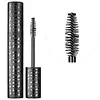What's inside
What's inside
 Benefits
Benefits

 Concerns
Concerns

 Ingredients Side-by-side
Ingredients Side-by-side

Water
Skin ConditioningAcrylates/Ethylhexyl Acrylate Copolymer
Glyceryl Stearate
EmollientGlycerin
HumectantCopernicia Cerifera Cera
EmollientAlcohol
AntimicrobialVp/Eicosene Copolymer
Stearic Acid
CleansingButyrospermum Parkii Butter
Skin ConditioningPalmitic Acid
EmollientRicinus Communis Seed Oil
MaskingPhenoxyethanol
PreservativeAminomethyl Propanol
BufferingXanthan Gum
EmulsifyingPvp
Emulsion StabilisingSodium Dehydroacetate
PreservativeLaureth-21
CleansingEthylhexylglycerin
Skin ConditioningCI 77499
Cosmetic ColorantWater, Acrylates/Ethylhexyl Acrylate Copolymer, Glyceryl Stearate, Glycerin, Copernicia Cerifera Cera, Alcohol, Vp/Eicosene Copolymer, Stearic Acid, Butyrospermum Parkii Butter, Palmitic Acid, Ricinus Communis Seed Oil, Phenoxyethanol, Aminomethyl Propanol, Xanthan Gum, Pvp, Sodium Dehydroacetate, Laureth-21, Ethylhexylglycerin, CI 77499
Water
Skin ConditioningHydrogenated Olive Oil Stearyl Esters
Emulsion StabilisingStearic Acid
CleansingAcrylates/Ethylhexyl Acrylate Copolymer
Helianthus Annuus Seed Cera
EmollientOryza Sativa Cera
Skin ConditioningPolybutene
Ricinus Communis Seed Oil
MaskingPolyglyceryl-3 Rice Branate
EmulsifyingPropanediol
SolventGlyceryl Stearate
EmollientC18-36 Acid Triglyceride
EmollientPolyvinyl Stearyl Ether
Skin ConditioningAminomethyl Propanediol
BufferingPhenoxyethanol
PreservativeHdi/Trimethylol Hexyllactone Crosspolymer
Methyl Methacrylate Crosspolymer
Sodium Dehydroacetate
PreservativeEthylhexylglycerin
Skin ConditioningLaureth-21
CleansingCI 77499
Cosmetic ColorantWater, Hydrogenated Olive Oil Stearyl Esters, Stearic Acid, Acrylates/Ethylhexyl Acrylate Copolymer, Helianthus Annuus Seed Cera, Oryza Sativa Cera, Polybutene, Ricinus Communis Seed Oil, Polyglyceryl-3 Rice Branate, Propanediol, Glyceryl Stearate, C18-36 Acid Triglyceride, Polyvinyl Stearyl Ether, Aminomethyl Propanediol, Phenoxyethanol, Hdi/Trimethylol Hexyllactone Crosspolymer, Methyl Methacrylate Crosspolymer, Sodium Dehydroacetate, Ethylhexylglycerin, Laureth-21, CI 77499
Ingredients Explained
These ingredients are found in both products.
Ingredients higher up in an ingredient list are typically present in a larger amount.
We don't have a description for Acrylates/Ethylhexyl Acrylate Copolymer yet.
Ci 77499 is also hydrated iron III oxide. It is created from mixing red and black iron oxides. This helps give shades of darkness to a product.
Iron III oxides are classified as inorganic chemicals for coloring.
Ethylhexylglycerin (we can't pronounce this either) is commonly used as a preservative and skin softener. It is derived from glyceryl.
You might see Ethylhexylglycerin often paired with other preservatives such as phenoxyethanol. Ethylhexylglycerin has been found to increase the effectiveness of these other preservatives.
Glyceryl Stearate is a mix of glycerin and stearic acid.
It is used to stabilize the mixing of water and oil ingredients. By preventing these ingredients from separating, it can help elongate shelf life. It can also help thicken the product's texture.
As an emollient, it helps soften skin and supports barrier-replenishing ingredients.
In cosmetics, Glyceryl Stearate is often made from vegetable oils or synthetically produced.
This ingredient may not be fungal-acne safe
Fun fact: The human body also creates Glyceryl Stearate naturally.
Learn more about Glyceryl StearateWe don't have a description for Laureth-21 yet.
Phenoxyethanol is a preservative that has germicide, antimicrobial, and aromatic properties. Studies show that phenoxyethanol can prevent microbial growth. By itself, it has a scent that is similar to that of a rose.
It's often used in formulations along with Caprylyl Glycol to preserve the shelf life of products.
Ricinus Communis Seed Oil is the INCI name for castor oil.
Castor Oil helps moisturize the skin. It is rich in a fatty acid called ricinoleic acid. This fatty acid helps prevent moisture loss on the skin. This helps keep your skin soft and hydrated. Ricinoleic acid also has anti-inflammatory and pain reducing properties.
Besides hydrating the skin, castor oil is also used to hydrate hair. By keeping the hair shaft moisturized, breakage is decreased. More studies are needed to show castor oil's effective on stimulating hair growth.
Castor oil is created by cold-pressing castor seeds and then purifying the oil with heat. It was used in Ancient Egypt as fuel in lamps and to help treat eye irritation.
The term 'fragrance' is not regulated in many countries. In many cases, it is up to the brand to define this term. For instance, many brands choose to label themselves as "fragrance-free" because they are not using synthetic fragrances. However, their products may still contain ingredients such as essential oils that are considered a fragrance.
Learn more about Ricinus Communis Seed OilThis ingredient is a preservative with antimicrobial properties. It is the sodium salt of dehydroacetic acid.
It is especially effective at preventing bacterial and fungal growth in low concentrations.
Stearic Acid is a fatty acid. It is an emollient, emulsifier, and texture enhancer.
As an emollient, stearic acid helps soften skin. It aids the skin's protective barrier by preventing water loss. It also provides a gentle cleansing effect without stripping away natural oils.
Stearic acid may also be used to enhance the texture of products. It can add volume and stabilize ingredients such as water and oil. This can help water and oil ingredients from separating.
Sources of stearic acid include animal or vegetable fats/oils such as coconut or shea. It can be naturally found in butter, cocoa butter, shea butter, vegetable fats, and animal tallow.
This ingredient may not be Malassezia folliculitis, or fungal-acne safe.
Learn more about Stearic AcidWater. It's the most common cosmetic ingredient of all. You'll usually see it at the top of ingredient lists, meaning that it makes up the largest part of the product.
So why is it so popular? Water most often acts as a solvent - this means that it helps dissolve other ingredients into the formulation.
You'll also recognize water as that liquid we all need to stay alive. If you see this, drink a glass of water. Stay hydrated!
Learn more about Water